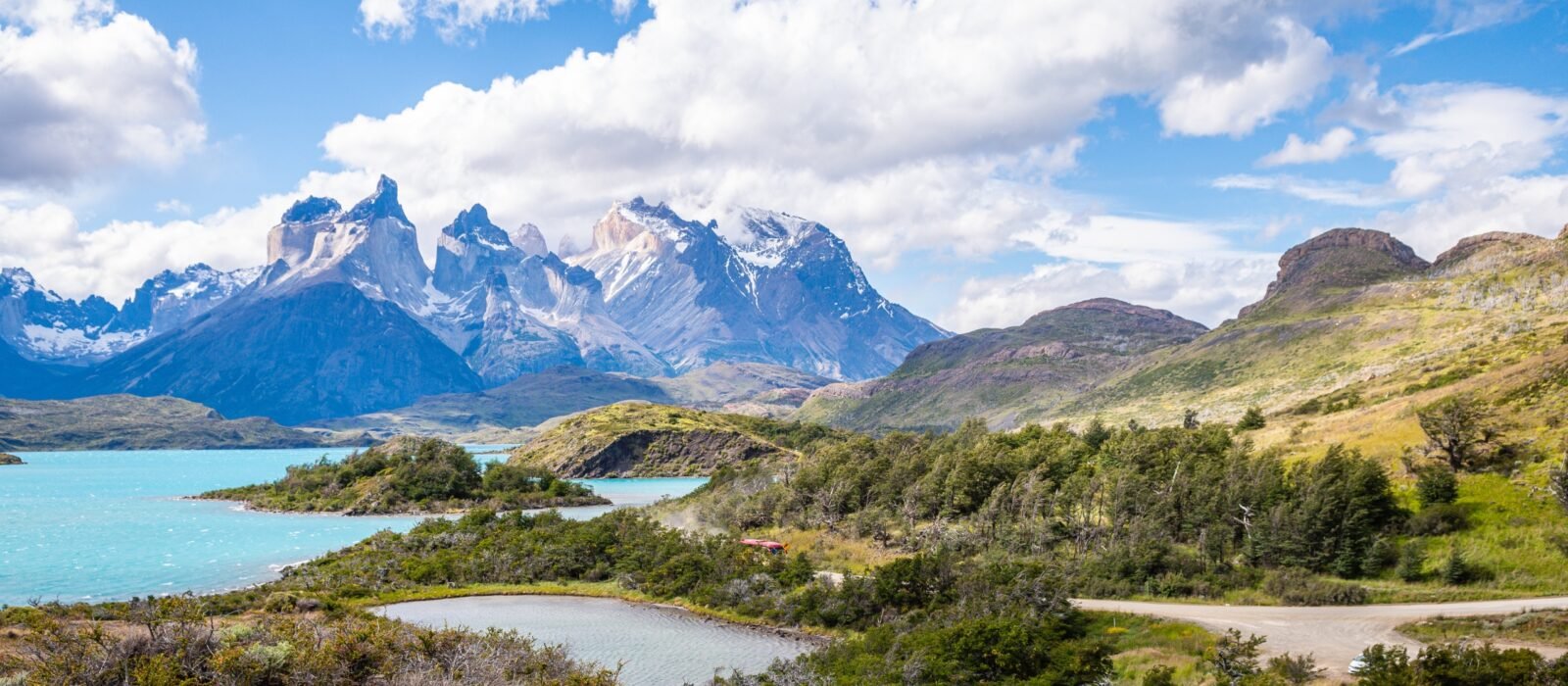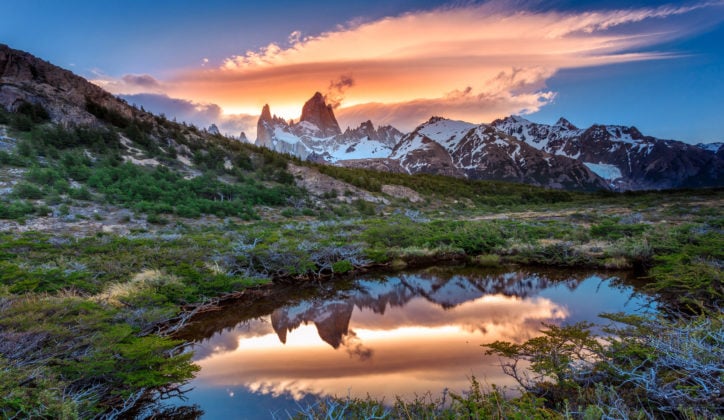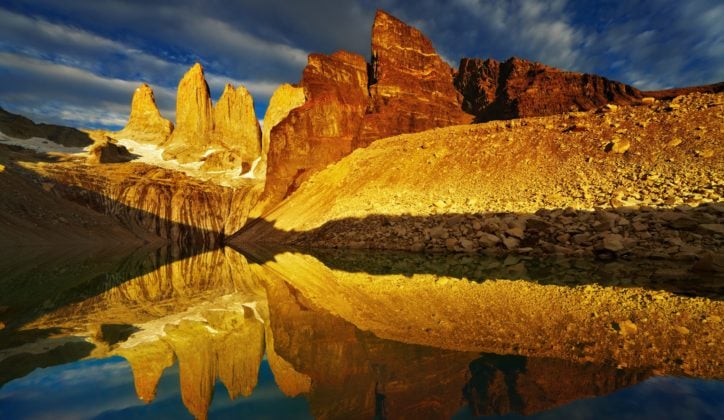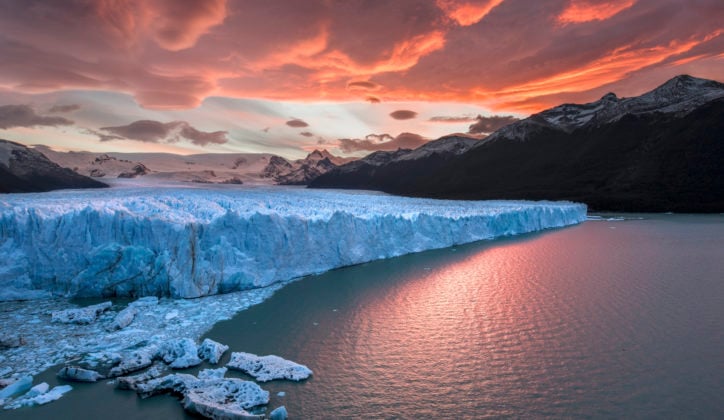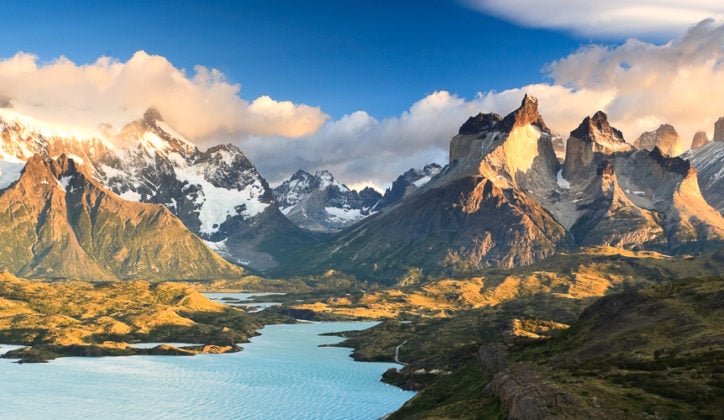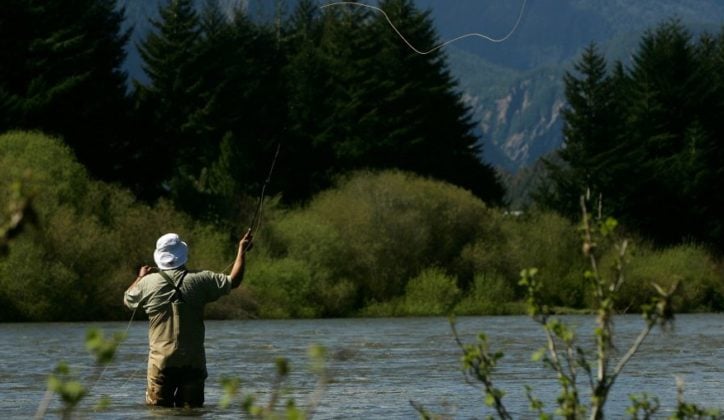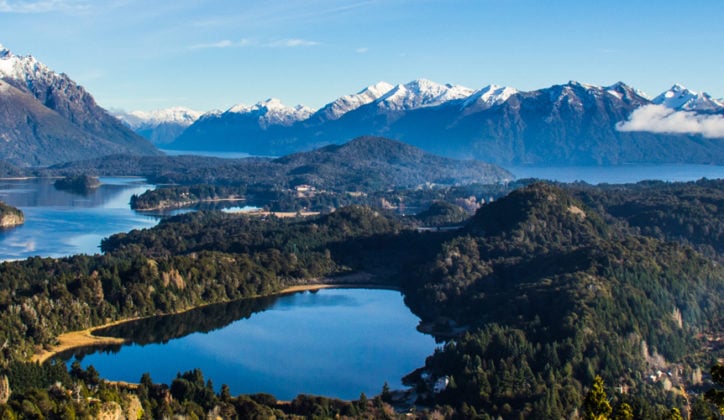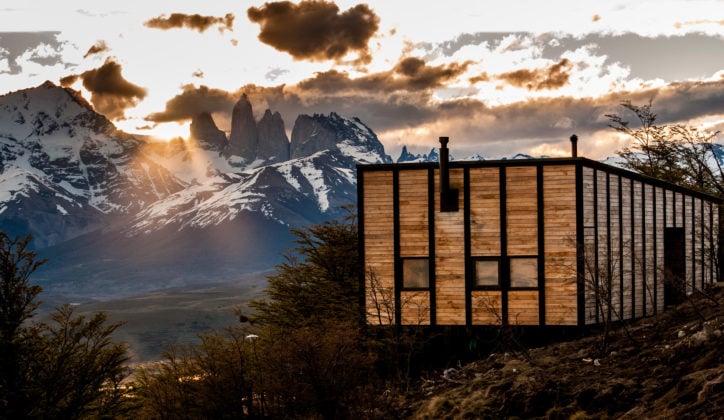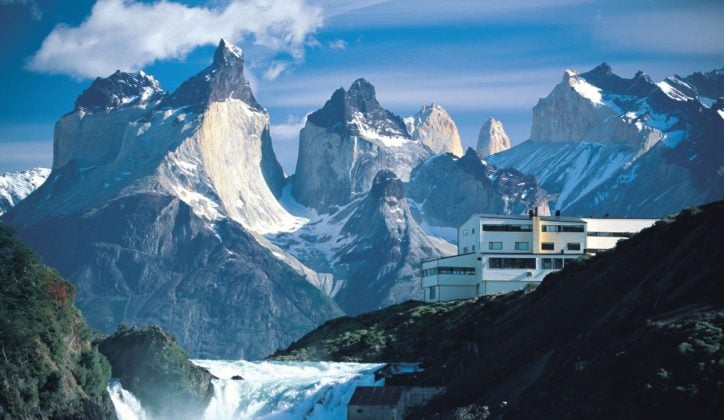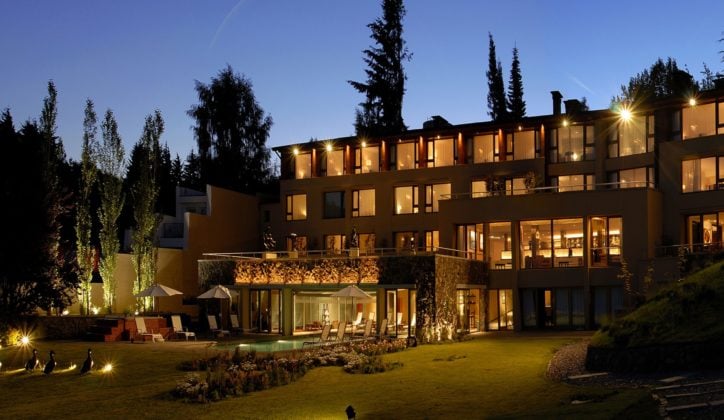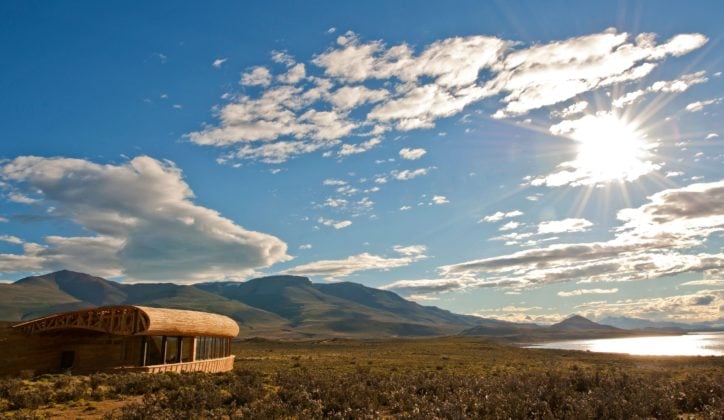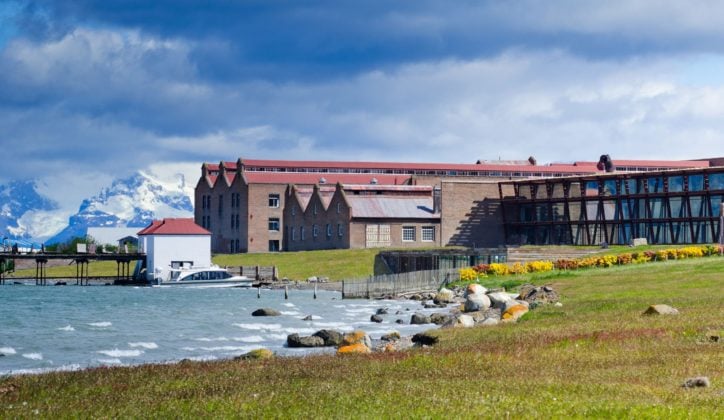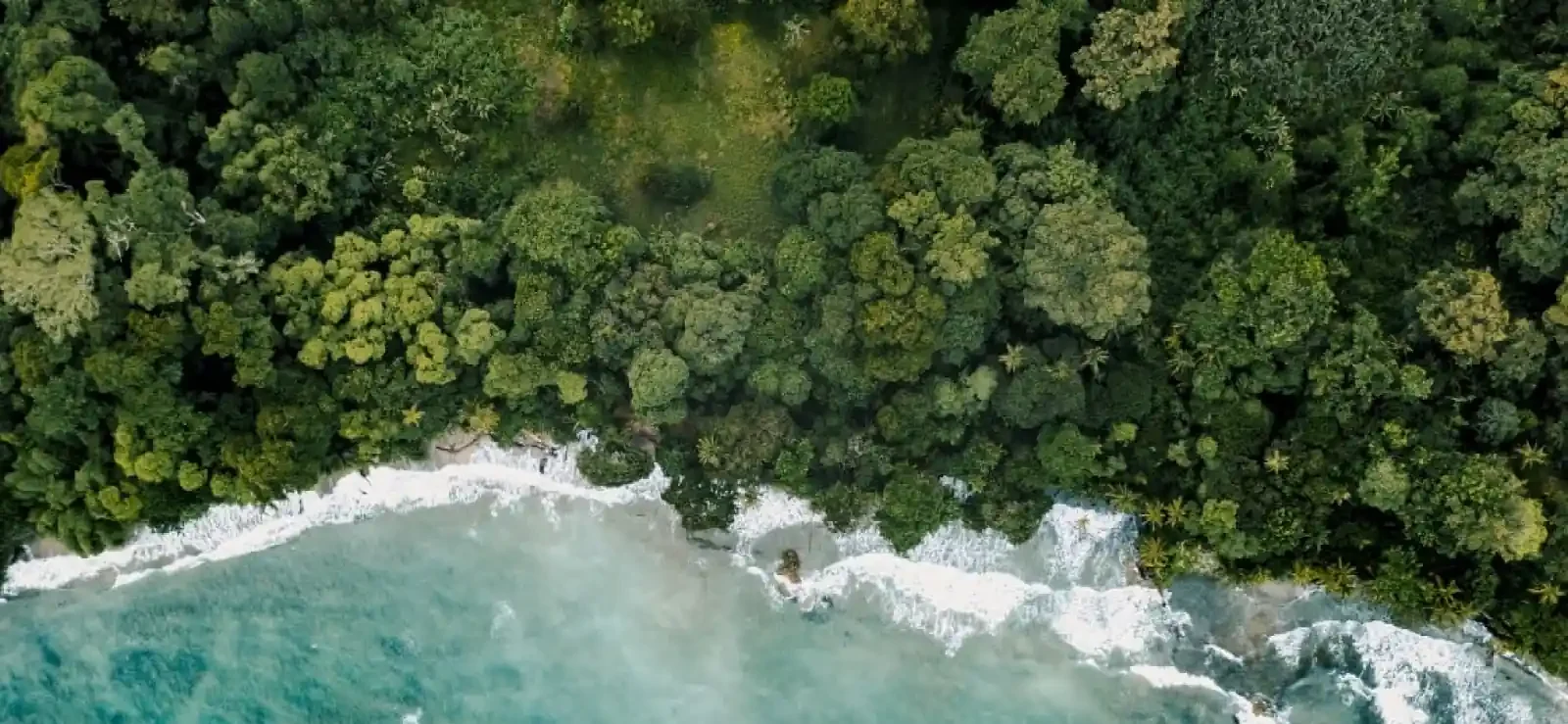Published on: September 18th, 2017
Last updated: March 21st, 2024
The best time to visit Patagonia is in the summer months from December to February. This is the perfect time for outdoor activities across Torres Del Paine, Calafate, El Chalten and Ushuaia. Visit Patagonia from September to November or February to April to avoid the crowds and witness spring blooms or vivid reds of autumn.
This striking region of Latin America stretches through the southern parts of Chile and Argentina, covering an enormous 260,000 square miles. It’s worth remembering that different areas located in this vast expanse do differ in climate. Coastal regions are wetter and milder, whilst further inland the weather is typically drier but cooler. In Tierra Del Fuego, temperatures can reach a balmy 15°C (59°F) during the summer months, while during winter, May to September, it can drop to 1°C (33°F).
In terms of activities there’s innumerable thrilling (and more gentle) pursuits aimed at discovering Patagonia's incredible natural splendour. From epic hikes in Torres del Paine, to relaxing boat trips to the Perito Moreno Glacier in Calafate. You can relax in hot springs in Pucon or try white water rafting. There’s whale watching on the Peninsula Valdes or penguin spotting in Ushuaia.
What is the climate like in Patagonia?
Patagonia experiences four distinct seasons. The summer months of December to February can reach 22°C (71.6°F), whereas snow and antarctic-like conditions can be experienced in the height of winter; June to August.
However, despite the distinct seasons, the day to day weather in Patagonia is changeable. Even during the warm summer months it’s possible to experience four seasons in one day – meaning that you will need to pack waterproof clothing and warm layers, no matter when you travel to Patagonia.
Summer in Patagonia - December to February
In the southern hemisphere, summer lasts from December to February. This is the best time to visit Patagonia when the weather is at its warmest. At this time, in Ushuaia (the southernmost city in the world), temperatures are pleasant at 15°C (59°F), reaching 22°C (71.6°F) in the northern areas like Bariloche.
For anyone looking to explore the great outdoors and take on some challenging hikes, then the best time to visit Patagonia would be the summer season. During these months, it is possible to partake in many of the adventure sports on offer. Kayaking, mountain biking, horse riding and wildlife observation are all very popular. Torres del Paine and El Chalten are two of the most popular areas in Patagonia for incredible hiking.
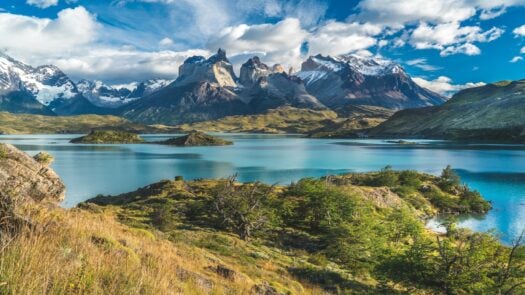
The summer months are also the time when the winds are at their strongest, occasionally reaching gusts of 120mp. It’s also a popular time so it’s hard to avoid the crowds on the main trekking routes, such as The Towers or the W trek. However, for alternative, quieter treks, opt for a stay at the exclusive Awasi Patagonia where you can enjoy a wide range of excursions within their own private reserve.
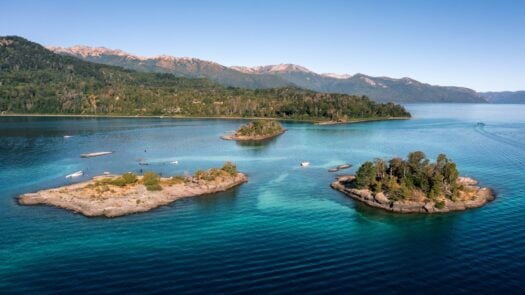
Winter in Patagonia - May to September
The winter months in Patagonia run from May to September and although the skies are striking, making for a stunning backdrop, the temperatures can feel very cold at around 0°C (14°F). In areas such as Torres del Paine, one of the main attractions of Patagonia, many lodges close for season.
The adverse conditions can make hiking more challenging and the logistics of moving around on regional flights and on transfers can be difficult and unreliable. Extra time for travel needs to factor into a Patagonia trip in the winter. However, it is still possible and the famous Explora Patagonia only closes for a few weeks in June and July, a good option for those who want to experience the region in winter.
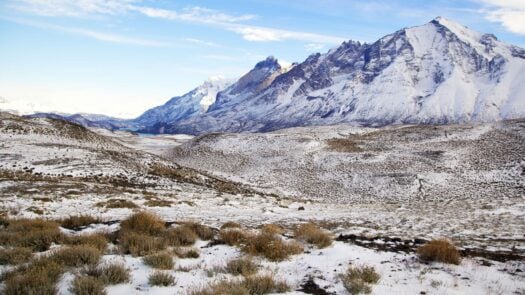
That said, there are plenty of reasons to visit Patagonia in the winter. For those who are interested in snow activities, want to skip the crowds or simply want to experience the stark beauty of the landscapes, winter can be one of the best times to visit Patagonia.
Bariloche in Argetnina’s Lake District is said to have some of the best ski slopes in the world, for the experienced skier and those equipped to handle cold weather.

Shoulder Seasons in Patagonia - September to December and February to April
The shoulder season months are a lovely time to visit Patagonia and the best to avoid the crowds. The shoulder season means fewer visitors in the main areas such as Torres del Paine National Park. Outdoor activities can now take place among pretty spring flowers or the rich reds or autumn.
During these months, the winds are not as severe and the leaves are either turning a beautiful autumnal orange colour or starting to blossom. This only enhances the incredible natural beauty of Patagonia, making it a perfect destination to photograph and hike around.
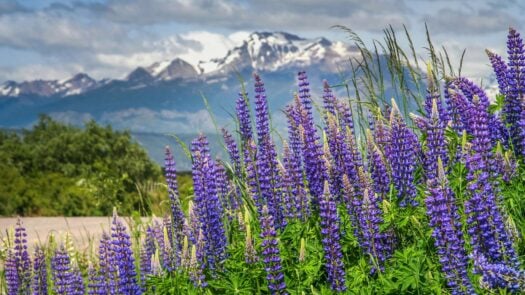
The crowds are also less intense during the shoulder season months and things can feel a little more peaceful than during the peak season. However, it can feel cold. The weather can also be more unpredictable in terms of rainfall, and even snow.
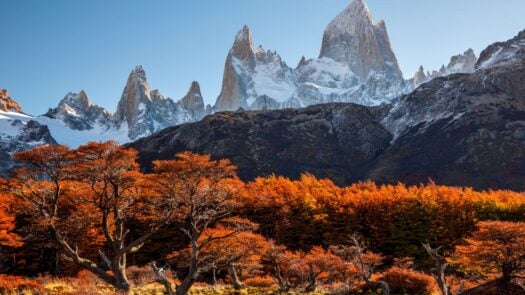
The best time to visit Patagonia for hiking
The best time to visit Patagonia for hiking is December to February, the peak summer season. Torres del Paine and El Chalten, the region’s top trekking areas, can also offer good conditions in the shoulder season months of November and March. At this time the weather is dry and clear and temperatures are at their warmest at around 15°C (59°F).
When is the best time to see wildlife in Patagonia?
Go whale watching in Patagonia
The best time to go to Patagonia for whale spotting is between June and December, with most sightings typically taking place in October. At this time of year, in Peninsula Valdes in Argentina, it’s possible to see both southern right whales and orcas from land or on exciting whale watching boat trips.
Chiloé in Chile is another place where whales can be spotted, the best time is between December and March. Tantauco Park and Chiloe National Park are both good lookout points.
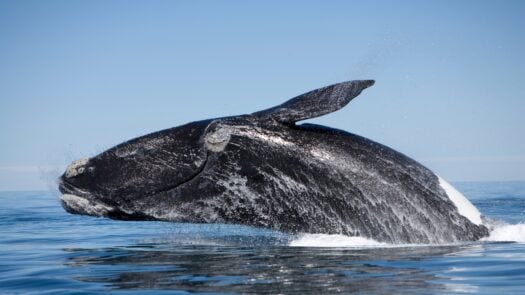
See penguins in Patagonia
There are several places to view penguins in Patagonia but perhaps the best is Peninsula Valdes. The best time to visit is from July to September. This is also a great place to witness high densities of other wildlife too, for a complete Patagonian wildlife adventure including sea lions, elephant seals and dolphins.
There are also opportunities to meet cute Magellanic and Gentoo penguins on boat trips from Ushuaia, into the beagle channel. The best time to visit Patagonia to see the penguins in Ushuaia is from November to February.
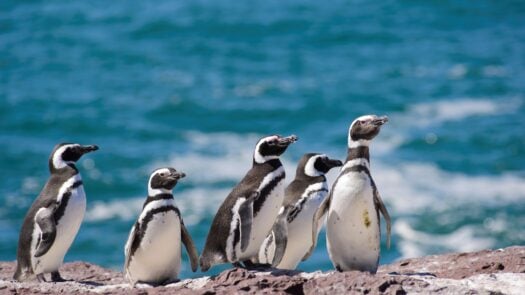
Spot pumas in Patagonia
It’s possible to see pumas throughout the year in Patagonia, particularly Torres del Paine National Park. Although they are beautifully camouflaged and tricky to spot there’s thought to be around 100 pumas active in the park (as of August 2020). For big cat enthusiasts there are dedicated puma-tracking excursions, typically lasting around 3 to 5 days.
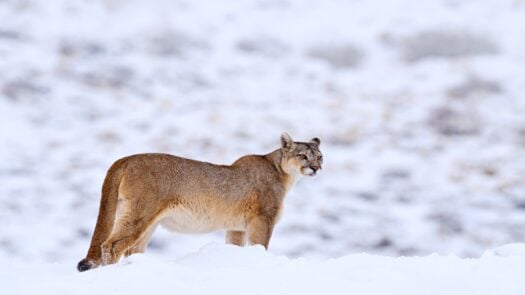
What are the warmest months in Patagonia?
Patagonia is not generally considered to be a ‘warm’ destination, however, in January, the lake districts of Chile and Argentina can see temperatures reach 22°C (71.6°F). January is also the warmest month for Torres del Paine, with highs of 15°C (59°F), which can feel much warmer on challenging hikes in the midday sunshine.
How much time should you spend in Patagonia?
How much time you spend in Patagonia really depends on you; the sorts of activities you’d like to take part in and how much time you can invest on your vacation. There are important factors to take into consideration, such as travel time and time of year.
Reaching the remote lodges of Torres del Paine national park will take a full day of regional flights and road (and off-road) transfers, with the same journey when you return to Santiago. With that in mind, anything less than 3 nights in a remote lodge can feel like a lot of travelling without enough time to enjoy the area.
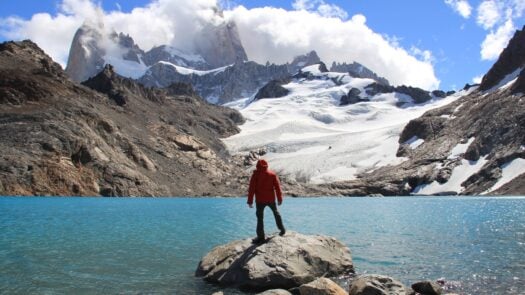
If you plan to make this journey in winter, you must factor in extra time for delays and even impassable roads, due to inhospitable conditions.
Perhaps the ultimate Patagonia trip combines both Chile and Argentina. One of the best ways to do this is by crossing the border while on a luxury Cape Horn Cruise. These cruises depart from either Ushuaia in Argentina or Punta Arenas in Chile and sail wildlife-rich fjords and icy glacier waters between the two countries. The cruises take between 3 and 4 nights and run from September to April.
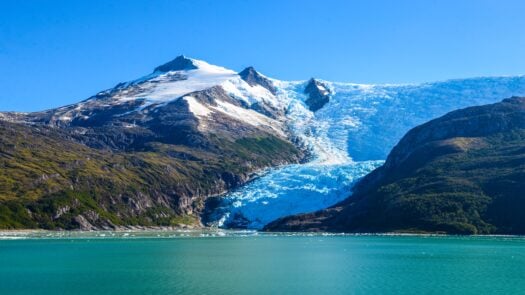
Our Team's Favourite Trips to Patagonia
Where to Stay in Patagonia
Whatever you want from your trip to Patagonia, our team of expert travel designers are ready to help.

